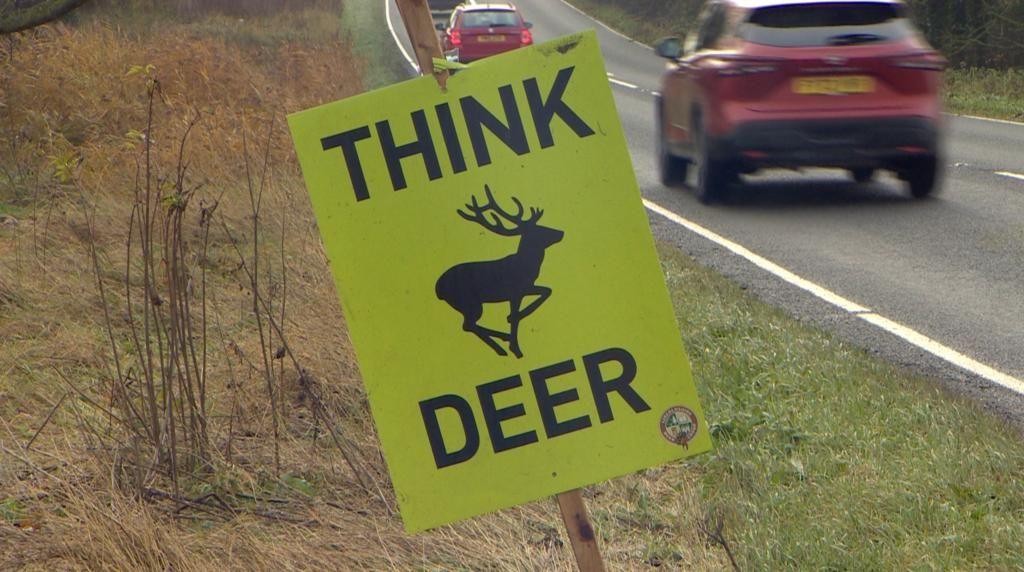Deer road deaths on the rise warns wildlife group

The Lincolnshire Deer Group has installed about 20 signs along the A15 to encourage drivers to slow down near deer herds
- Published
A booming deer population has led to a sharp rise in the number of the animals being hit by vehicles on Lincolnshire's roads, wildlife experts have said.
The Lincolnshire Deer Group said it had been called out to 194 deer collisions in 2023 so far, up from 140 last year.
Stephen Heath, from the group, said deer populations had become "near epidemic in some places" despite attempts to control their numbers.
Signs have been put out along the A15 near Bourne warning drivers to slow down around a deer hotspot.
Stephen Heath is one of the volunteers who helps deal with aftermath of crashes involving deer
Volunteers from the Lincolnshire Deer Group help police when deer have been hit on the roads.
Mr Heath said hitting a deer could be "traumatic" for motorists and, because of their size, it was like "hitting a block of concrete".
This article contains an image some people may find distressing
He described the aftermath of a crash where one deer was hit by a car and propelled through the air into the windscreen of an oncoming car.
"It was still alive, so the driver was having to contend with hooves flailing around inside the cabin," he said.
The British Deer Society said culling the deer population was the only humane way of dealing with the issue.
Charles Smith-Jones, technical adviser to the society, said leaving populations to grow would be "cruel".
"It would lead to overpopulation, massive stresses, disease and ultimately starvation, "he said.
The Lincolnshire Deer Group said it was being called out to collisions as often as five times a week at this time of year
Prof Paul Dolman has as part of his job as Professor of Conservation Ecology at the University of East Anglia.
"In the absence of wolves and bear, the reintroduction of which is not feasible, then culling is the only way to reduce deer numbers," he said.
However, animal rights charity PETA, said shooting deer was an "ineffective way of dealing with booming deer numbers".
Jennifer White, from the charity, said: "We owe it to them to find a way to live in harmony that doesn't involve blasting them out of the country with a shotgun."